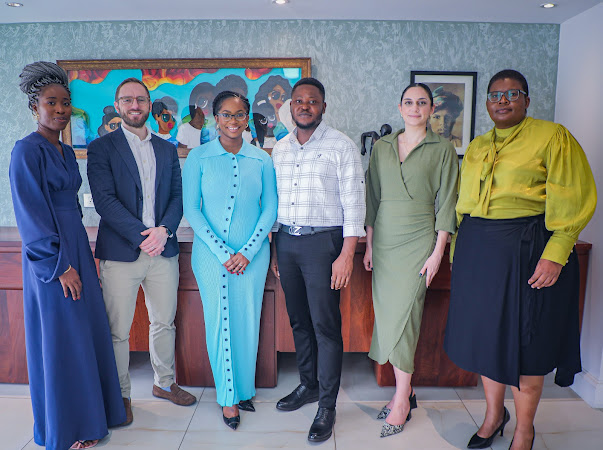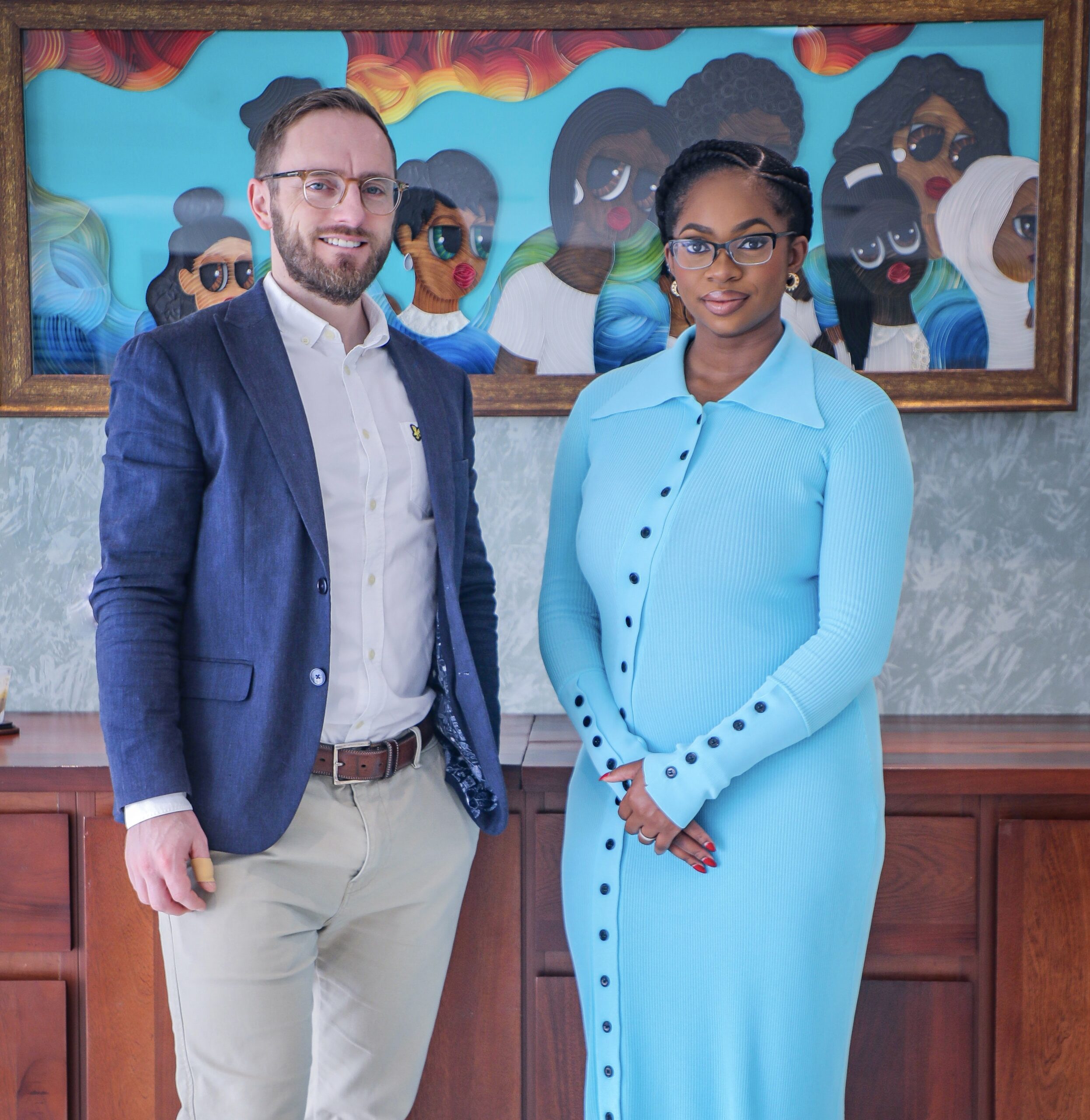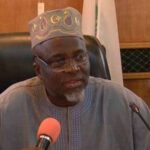After a decade of solving electricity metering problems with its unique technology which has giving it a cutting-edge, Shyft Solutions led by its vibrant and visionary Chief Executive Officer, Ms. Ugwem Eneyo spreads its tentacles recently by teaming up with SteamaCo, a United Kingdom based Anglo-African technology house led by Mr. Tom Parkinson to drive the same vision in the Nigerian energy landscape. This merger is expected to contribute to the broader transformation of Africa’s energy landscape as they work together in digital transformation to solve electricity supply chain through metering. In this interview, Ugwem Eneyo, the CEO of Shyft Solutions, and Tom Parkinson, Managing Director of SteamaCo, explain the driving force behind this mission and what is expected. Excerpts:
* UGWEM ENEYO (Shyft Solutions):
Q: Tell us about Shyft Power Solution and what exactly does it aim to achieve in the Nigerian electricity sector?
Shyft Power Solutions is an energy technology company which began its operations about a decade ago, with an aim to help power companies to be more reliably, deliver power that is affordable, that is cleaner and is more resilient. Our company is a backup power solution or more of renewable energy solutions.
At Shyft, one of the first things we realized is that, for solutions like micro-grids, backup power, solar, battery technology to really scale through and meet the energy demands of Nigerians, the power companies that are delivering these solutions needed to be able to support, maintain and operate those types of solutions.
Because of our expertise, again, in power, IoT and software, we moved into the space of also providing, at the time we called it sub-metering, so metering solutions not necessarily at the utility or at the distribution company scale but for independent power producers, facility management companies, estates, where you as a home owner or, let’s say, a commercial business want to understand how much energy “am I using,” being able to pay for it in more streamlined, intelligent ways like via mobile apps, and have transparency in what services you are being provided by your power company.

Q: How do you intend to solve the key challenge of metering gap?
This has been an ongoing challenge, but part of what has been exciting about our merger with SteamaCo is that SteamaCo was bringing a lot of expertise in delivering metering solutions, certainly in the off-grid market, working with multiple stakeholders, institutions that fund and finance initiatives to address metering gaps in rural areas. And Shyft had quite a bit of experience working with power companies in semi-urban and urban areas.
We think right now joining forces is really going to allow us bring our expertise in working with institutions and investors that can fund and bring capital that are required to really fund the meters that are needed to meet the gap. Investors need to be able to make data-driven decisions. So Shyft and SteamaCo are saying we are going to move power forward and deploy metering solutions because we know that there is an opportunity that is going to arise from having a better visualization from digitizing the energy landscape by deploying meters.
Q: What is your driving force is, which made you to still go ahead and establish Shyft in Nigeria despite all of these challenges?
My family is from outside Port Harcourt, from Niger Delta area and, so, we all know history of how development, infrastructure, environment and how these things have impacted people. Growing up and seeing that and the impact that, that type of development had directly on my family, made me feel that I could play a very important role in building a power company that not only was focused on innovative solutions, building premium products and technology, but that also recognized that we are here to solve problems for people, for consumers.
It is not just about us being an impact company. We are not just about making money. And so as you can see probably from meeting with some of my team today, when Shyft got started, we are primarily Nigeria-based. I know that doing business in Nigeria is tough, but I am a Nigerian. I am Nigerian-American. So I have a privilege of being able to say that I want to be able to go home and positively contribute to my family and where I come from, and if not me, then, who? That was the rationale.
Q: How quickly will the Shyft metering units be produced, rolled out to be made available to electricity consuming communities; and what are the shared objectives between Shyft and SteamaCo?
Shyft metering solutions have now been in the Nigerian market for well over about two years. We have at this point several thousand Nigerian consumers that are using FastFood shyfts metering applications. And most recently, we partnered with Echo Utilities for the Eko Atlantic development, rolling out metering solutions for their development of that IPP. So we are already seeing consumers use shift technology.
We are on a mission to eradicate energy poverty. And we think the method of doing so starts with ensuring that power companies can provide productive power. That means power companies need to be able to be reliable in the services that they provide. And in order to do that, there is a suite of digital solutions that are necessary. That is advanced metering infrastructure. It is the software applications that they are able to use to not only handle billing and collections but to detect losses and abnormalities in the system. And we think if you can drive operational efficiency, if you can prevent losses, if you can drive transparency and reliability with consumers, that is really going to allow the power sector to move forward.
Q: What key metrics will you use to measure success in the power sector?
There are few. One is metering points, so the number of meters, really, that we are deploying. It is a key indicator of how many consumers we are impacting, how many lives we are impacting, and how we are addressing the gap, the well-understood metering gap that exists.
Secondly, you heard me mention lives impacted. That is a key one for us when we think about impact. So making sure that we are providing something that really is transforming the lives for African consumers, Nigerian consumers.
I would also like to emphasize that we keep track of things like amount of energy processed, passing through our technology, our meters and our monitoring solutions, as well as Naira process. So we want people to be able to pay for power in a transparent manner. So if we can get them to be paying for power using our applications, our software, helps us show that we are moving from informal metering and collections to transparent and reliable metering and billing.
Q: For the average consumer, can you explain clearly how your technology differs from the traditional metering system?
For the typical Nigerian consumer, you top up, you buy a token, you punch it in, so you probably have to be in proximity to your meter, or somebody needs to be in proximity to punch it in. It tops up. You know it finishes when the light goes out. So now, with applications like FlexView, that is one of our product lines, you open your mobile app, your computer, or if you have access, you can go to your meter, but you don’t need to be in proximity of your meter. From anywhere, on a phone or a computer, you can see what your credit is on your meter, you can make a transaction to top up your meter there, no need for a token, no issue with error, no token generation, nothing like that, not losing the token pin, or all of that kind of stuff.
You get low balance alerts. You can get alerts to let you know about your consumption pattern, meaning before your credit runs out, you are getting alerted three days before, two days before, your credit’s about to run out, you are seeing what that balance is, so you can top up, or so you can set up auto top up. So once your credit hits a certain amount, you can top up your meter automatically. Not only that, with the metering experience today, you probably don’t know how much you are using. That no longer has to be the case.
* TOM PARKINSON (SteamaCo)
Q: What is your own insight into the merger and what was the driving force?
There are millions of people and energy users in Nigeria and across Africa, and what we want to bring is the visibility of the users’ usage and behaviour to the people who are providing that power usage. SteamaCo traditionally has dealt with the majority off-grid. We are moving on to the grid market. But there was a sort of gray space, as it were, which was in the estate management and facility management space, whereby a disco’s point would end at the bulk meter.
And so there could be a whole community and there could be a whole commercial park, an industrial park, where there would be no visibility and you have a problem collection at that point. So what we are trying to do is empower the power providers with as rich a data as possible. So SteamaCo and Shyft have tackled very similar problems, but for different markets.
Q: So now, how do you envision the merger contributing to the broader transformation of Africa’s energy landscape?
The key driver behind SteamaCo’s purpose is that energy alongside transport are the things which drive economies forward. So we are focused on enabling people to gain access to reliable, affordable, and productive power. That will generate jobs, and the jobs will generate security. We cannot live in a world where there are a billion people who don’t have good quality jobs and lack of security. This is a key driver behind this entire project and mission we are working on.
What we are doing is we are setting a blueprint in how energy monitoring and management can work in a digitized, smart, internet-connected, cloud-enabled world, where we can use that to then spread the best practices which we have developed, the investment which we can bring in, which provides bankable projects. We will spread that out across Africa. Now we are already in, and our systems are already working in 20 countries in sub-Saharan Africa. But Nigeria will be the best place to start, is the best place to start, and will be what the other African countries look up to.
Q: So, what are the key benefits of this merger arrangement for both companies, and how will this impact your operations and services in Nigeria?
Firstly, we get a really super-talented team in Nigeria that has been built. That helps us expand our combined footprint. So we will now have offices in both Abuja and Lagos, but we will have a really talented team on the ground. So firstly, it is about the people, right? So it’s a combination of great skill sets. The next is on the product set. Shyft has some unique and innovative technologies. SteamaCo has its own set of unique and innovative technologies. Bringing those together will provide a much better value proposition to the power providers.
People are generating their own power, more things like Electric Vehicles coming into the market, makes a much more complicated and complex energy system. And it is systems like the ones that Shyft has built with its Connect platform, alongside our sort of metering platform is going to enable that transition and the effective management of all those assets on board. So that is one of the key sort of product reasons. There are also synergies, which come from this, from working together and from leveraging more investment, because we have both got very supportive investors on either side.
Q: What do you want from the Nigerian government by way of ease of doing business in order for you not to regret and for Nigerians to also benefit generally at the end of the day?
The best thing the government can do is set stable and progressive policies which enable outside investment to come into this sector. Foreign Direct Investment is needed to drive economy not only in Nigeria but globally. Yes. The business too needs outside capital. It needs dollars coming into the country to help boost the economy. The way that it can do that is by having a stable power sector.
It needs outside investment to bring that power sector to fruition. And so it is setting the enabling environment to leverage that investment. And it is systems like Shyft and SteamaCo which provide the revenue assurance and the bankability of these investment projects for these investors.
It is a country of over 200 million people, median age is 18, a really good education sector. There is dynamism everywhere you look. But the only way that can happen is if the government enables through transparent practices, through clear guidelines and clear regulation, an environment in which people can invest and bring smart meters in.



